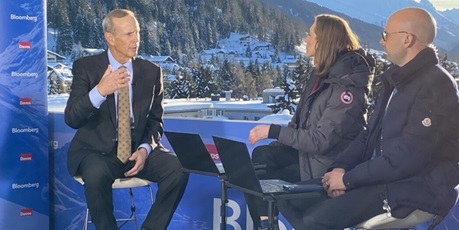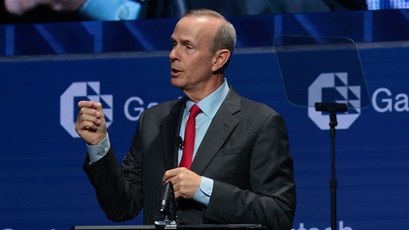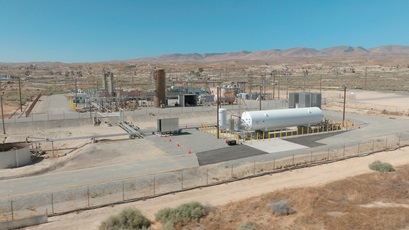emissions solutions
lower carbon future is key message at women engineers conference
2 min read | december 06, 2022
Panelists at the Society of Women Engineers Conference discuss a lower carbon future.
A focus of discussion at this year’s Society of Women Engineers (SWE) Conference was the need for new technology to achieve Paris Agreement goals and help meet lower carbon aspirations. Technological progress is required to advance solutions such as carbon capture, utilization, and storage (CCUS); hydrogen and renewable fuel adoption.
“When we think about technologies, we need to remember that they take time to develop,” said Molly Laegeler, vice president of Chevron’s San Joaquin Valley Business Unit. “As we’re on the road to a lower carbon future, we have to celebrate the technological progress we make to help remove carbon emissions today, knowing that we must keep moving along the journey to a lower carbon future.”
advanced engineering
Laegeler’s comments came during a panel discussion entitled “Engineering a Lower Carbon Future.” Alysia Green, general manager of IT engineering at Chevron, moderated the session.
Laegeler outlined Chevron’s four main initiatives for helping create a lower carbon future: CCUS, hydrogen, carbon offsets, and renewable fuels and production.
CCUS: bigger, better
Laegeler said one of the options for reducing carbon emissions is CCUS, which involves capturing carbon at the site of emissions and permanently storing it safely underground. Chevron is targeting hard-to-abate sectors like petrochemical manufacturing, power generation, and steel and cement production with CCUS.
“Those industries don’t have a line of sight to technologies that will get them to meet the Paris Agreement goals,” she said. “So that means that carbon has to go somewhere else.”
how it’s going
“The good news is CCUS is already happening today,” Laegeler said. “At Chevron, we have a couple of sites with CCUS operations, and other companies have sites around the world. But we need more technologies, new technologies, and we need to do it bigger and better.”
hydrogen in the mix
Hydrogen is hardly new to Chevron, Laegeler said at the conference. We produce 1 million tons of it per year and have been in the retail hydrogen business since 2005. Much like CCUS, hydrogen’s role in the energy future is likely to be in industries that are difficult to decarbonize, according to Laegeler.
“We’re planning a pilot next year in California where we mix hydrogen with natural gas as fuel for generators that exist today,” she said.
Laegeler explained that carbon emissions can be reduced by introducing more hydrogen to the fuel mix. As technology advances, that equipment could eventually run completely on hydrogen.
continuing collaboration
In order to fully scale these technologies, Laegeler said companies must continue to collaborate.
“I believe all of us throughout the industries are really paying a lot more attention to how all of the elements come together,” she said. “Working together across companies, with governments and internally, I think has made us more cross-functional than we have ever been before.”
leadership diversity
Following the discussion, Green talked about the role SWE plays in promoting diverse leadership.
“It’s impossible to overstate the importance of organizations like Society of Women Engineers that bring together exceptional, diverse leaders taking on some of the world’s most complex challenges,” Green said. “The passion and knowledge from each of the panelists was inspirational.”
alysia green
general manager, IT engineering
topics covered
related content
-

 future energy system conversations held during world forum
future energy system conversations held during world forumemissions solutionsjanuary 20, 2025
-

 satellite-monitoring campaign highlights power of collaboration
satellite-monitoring campaign highlights power of collaborationemissions solutionsnovember 11, 2024
-

 stable natural gas policy, balanced conversation needed, says chevron CEO
stable natural gas policy, balanced conversation needed, says chevron CEOemissions solutionsseptember 19, 2024
-

 lower carbon gas turbine first to hit major milestone
lower carbon gas turbine first to hit major milestoneemissions solutionsseptember 04, 2024
chevron email updates
Subscribe to our newsletter to receive news and updates.



